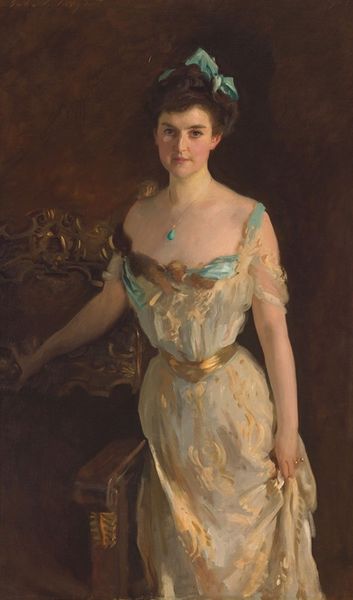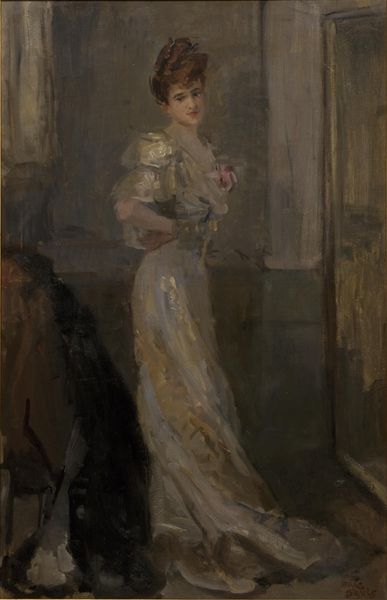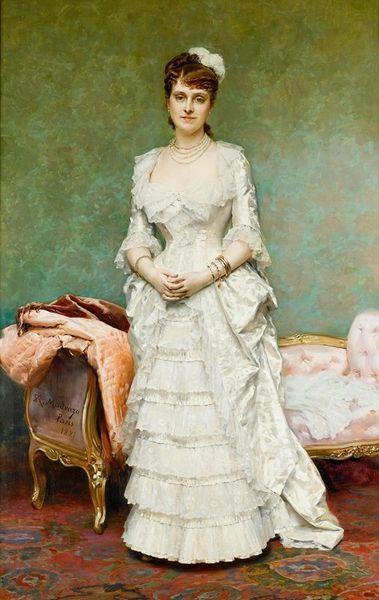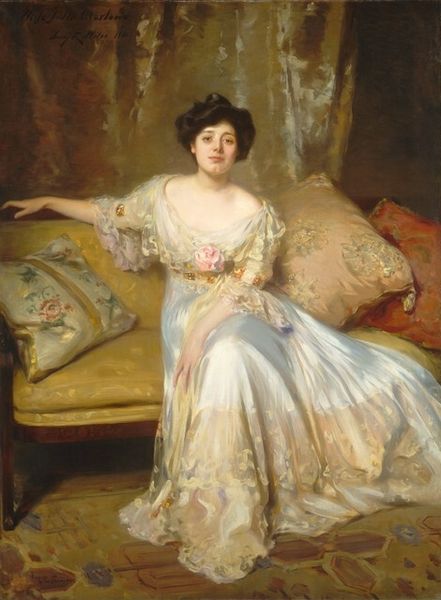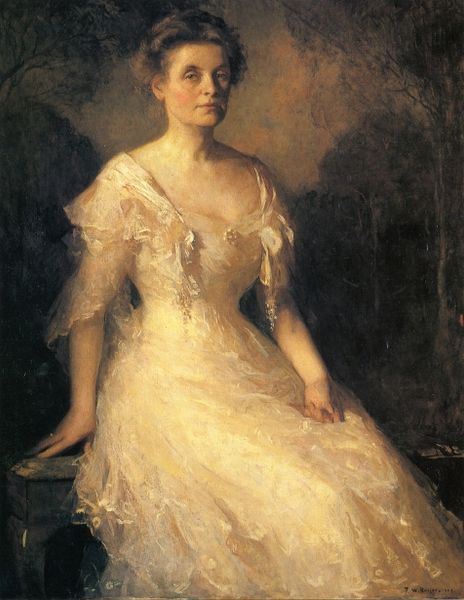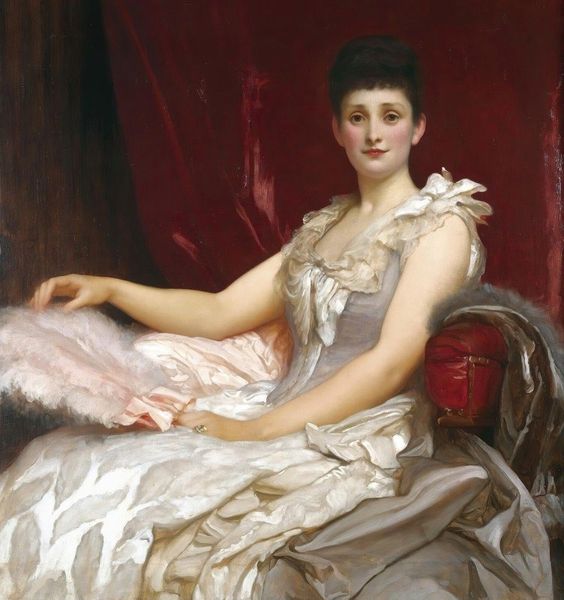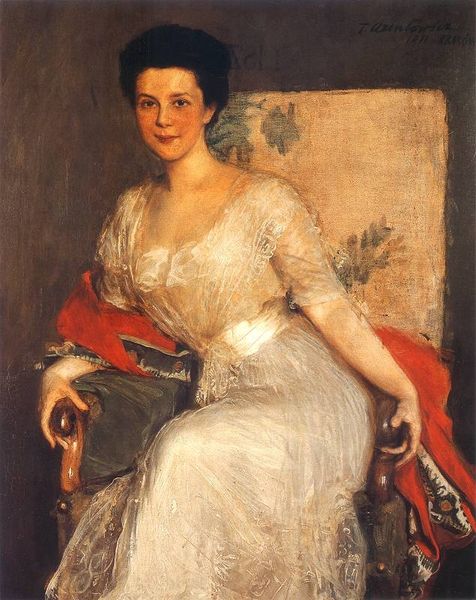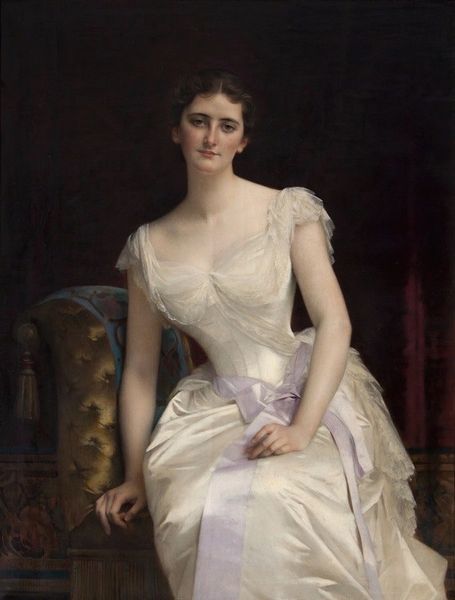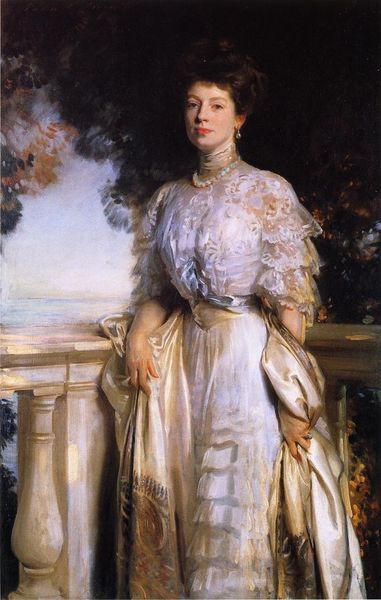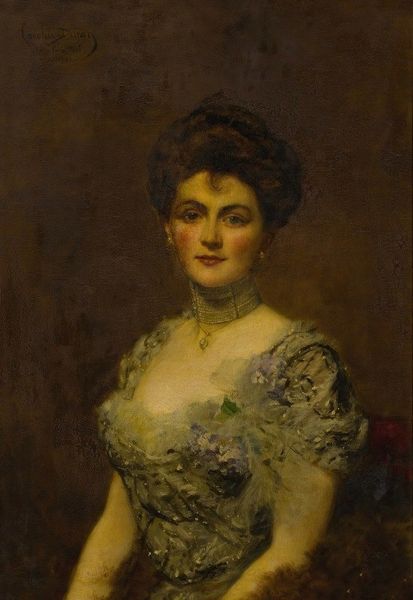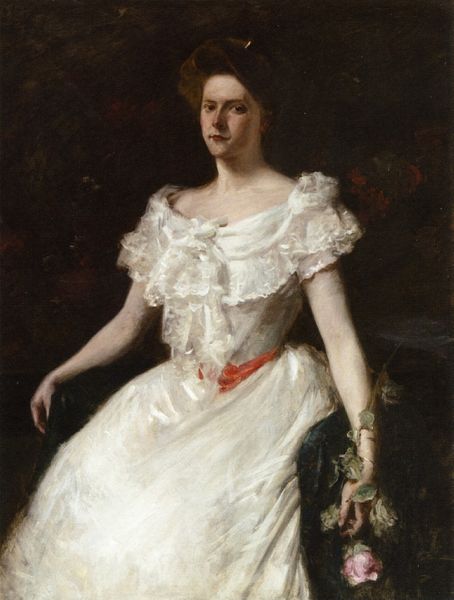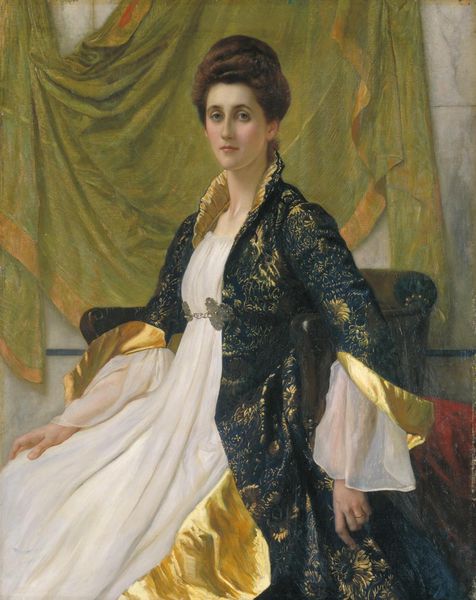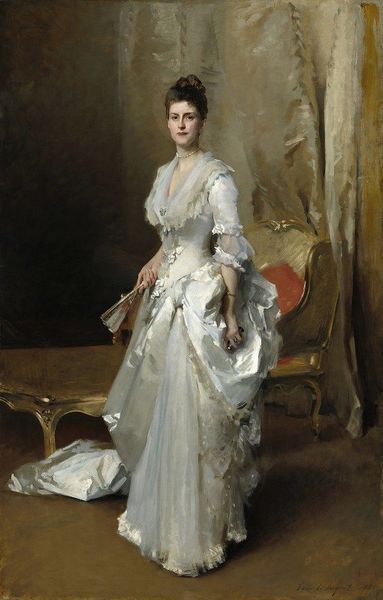
#
glasgow-school
Copyright: Public Domain: Artvee
Sir John Lavery painted 'A Lady in White' sometime in the late 19th or early 20th century, likely in Britain, using oil on canvas. This portrait embodies the visual codes of wealth and leisure in that era. White, a color impractical for labor, signifies status. The subject’s pose and attire suggest a life of comfort. Lavery was a successful portrait painter, and his work reflects the values of the upper classes who commissioned it. Consider the institutional history: portraiture served to reinforce social hierarchies. Artists like Lavery were part of a system that validated and celebrated the elite. The social conditions of the time – the rigid class structure and the power dynamics of the British Empire – are embedded in this image. To fully understand this work, explore archives of fashion, social history, and art patronage. The meaning of art is always contingent on its social and institutional context.
Comments
No comments
Be the first to comment and join the conversation on the ultimate creative platform.
